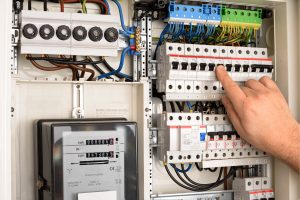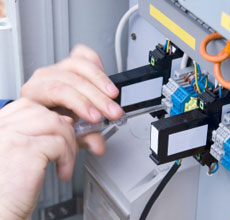In part 3 we cover the UPS systems specifications
Electrical Phases
It is important to find out whether you need a single phase or three phase electrical supply.
Low power UPS equipment will be one phase input and output.
Whereas you'll find larger equipment will have three phases for both the input and output.
when coming into the mid range, three phase input with a single phase output is typically used.
Cooling Systems
Not all critical loads need to be protected using a UPS system when it comes to specifications. Only systems that cannot withstand short breaks in the power otherwise they will be damaged. These are typically systems and equipment like servers as they always need to be protected by a UPS unit otherwise if these aren't protected then huge amounts of damage and problems will have a huge negative impact on your business. Other critical systems that can withstand a short break in power, such as server room cooling systems, can and should be protected using a generator. Server room cooling systems are regarded as critical loads because, if the cooling system fails, a thermal shutdown of the servers will occur, to protect them from overheating.
Power Conditioning
Much of the function of an on-line UPS is to clean up irregularities in the mains power supply. These irregularities typically last for a very short period of time. When/if you encounter a complete loss of power, your UPS system will use its batteries to keep a flow of power and when paired with a generator it will act as a bridge, to bridge the gap providing power until the generator gets up to speed and takes over.
Our On-line UPS units will also provide you with an automatic system bypass to mains if an overload or fault condition occurs.
On-Line / Double Conversion Technology
One of the types of UPS systems we have in stock at Computer Power Protection is called, On-line/double conversion technology. These specs provide the highest levels of power protection.
The UPS converts the incoming mains AC power to DC power. The DC current provides power to the battery and the inverter, which converts the DC back to AC and provides a clean, regulated and conditioned AC output to the protected load.
The battery is always in circuit and so when a mains failure happens the battery carries on supplying power to the inverter which means there is no break in the supply to the protected load and no switching is involved. A static bypass circuit is incorporated into the UPS which provides a failsafe mechanism, by providing AC mains to the load should the UPS be overloaded or in the unlikely event of an internal fault.
Online UPS systems are normally recommended when used with generators due to the UPS tolerance to voltage and frequency variations that can be associated with generators. Also, Battery pack extensions are also used and recommended to increase runtime.
Shop UPS by Clicking a Popular Brand
Offline / Standby Technology
An offline / standby UPS provides the most basic level of power protection. AC mains power passes straight through the UPS which has RFI filtering and limited spike protection provided.
In the event of a mains failure, or the AC mains voltage is outside the UPS operating window, the inverter starts up, a relay closes and allows the inverter to provide power to the load. Upon AC mains returning the mains output is switched back to mains and the inverter then shuts down. There are a few milli-seconds break during transfer to/from the inverter. The output when on inverter is invariably a square wave or stepped sine wave output.
Offline units typically have power ratings from 250VA to 2kVA. They typically have limited communications capability and whilst relatively cheap are normally recommended for only a single PC / workstation and home office type application.
Line-Interactive Technology
A Line-Interactive UPS provides a lot more protection than an offline UPS. However, it still does not provide protection against all mains-borne problems unlike an on-line double conversion UPS system.
These UPS's work in a similar way to an off-line UPS but have superior spike protection than an off-line system. They have a wider tolerance to voltage variations due to a voltage trimming transformer or similar. This increases the incoming AC mains voltage when it is low and decreases the incoming AC mains voltage when it is high and prevents the UPS switching to battery power and draining the batteries needlessly. During a mains failure, or if the incoming mains is outside operating limited the inverter starts up and provides power as described in an offline system. The output waveform on a line interactive UPS is normally a sine wave output.
Should you feel lost, stuck, or unsure or you know exactly what you need; please send an enquiry or Contact Us Now and we can take you through everything and put your mind to ease.















